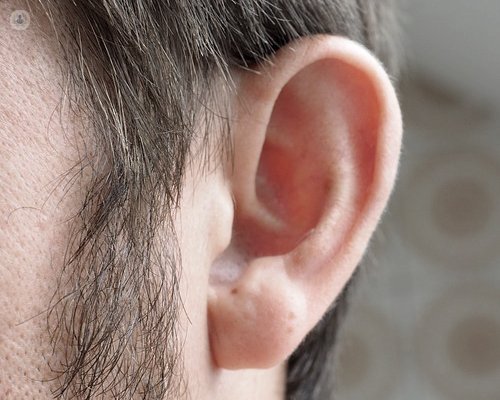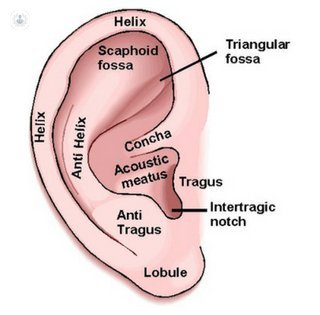The outer ear: is otoplasty right for you?
Written by:Otoplasty is among one of the most common plastic surgery procedures in the UK, among adults and children alike. The surgery is commonly known as 'ear pinning' and is performed as a correctional procedure.

Anatomy of the ear
The outer part of the ear is formed of the following:

- Concha: a funnel-shaped depression in the middle.
- Helix: the rim of the auricle.
- Anti helix: the space between the helix and the concha.
- Tragus: the triangular protrusion at the front of the concha.
- Anti tragus: located opposite the tragus on the bottom part of the concha.
- Lobule: at the bottom of the ear and is soft and loose. Also known as the earlobe.
Anatomical variations in the ear are as numerous as they are frequent, as are variations in shape and the anatomical aspects to consider when planning any surgical intervention.
The most frequent congenital malformation or deformity of the ear, occurring in almost 5% of people, is protruding ears. It is most commonly bilateral (on both sides) but it can also be unilateral (only one ear).
How is otoplasty performed?
Surgical correction of the ear is called otoplasty and it can be a very simple or a very complicated procedure, as malformations may be associated with psychological and emotional distress, depending on the results.
Otoplasty involves correcting the shape of the outer ear or its place on the skull. There are more than 50 techniques used in plastic surgery, although they almost always involve a resection of skin, which leaves a scar that becomes imperceptible over time.
What should I consider before an otoplasty procedure?
Before surgery, the plastic surgeon must explain to the patient, as well as their family, the advantages, disadvantages and complications, so they have a realistic idea of the results.
Depending on age, surgery can be done under general anaesthetic for children under five, and under local anaesthetic or sedative for adults.
What is the recovery process like after otoplasty?
Otoplasty is treated more as a reparative procedure, which is to say that its purpose is to give the ear an acceptable aesthetic appearance. The outer ear only has atrophic muscles, and they are not used to capture sound waves the way animal ears do.


